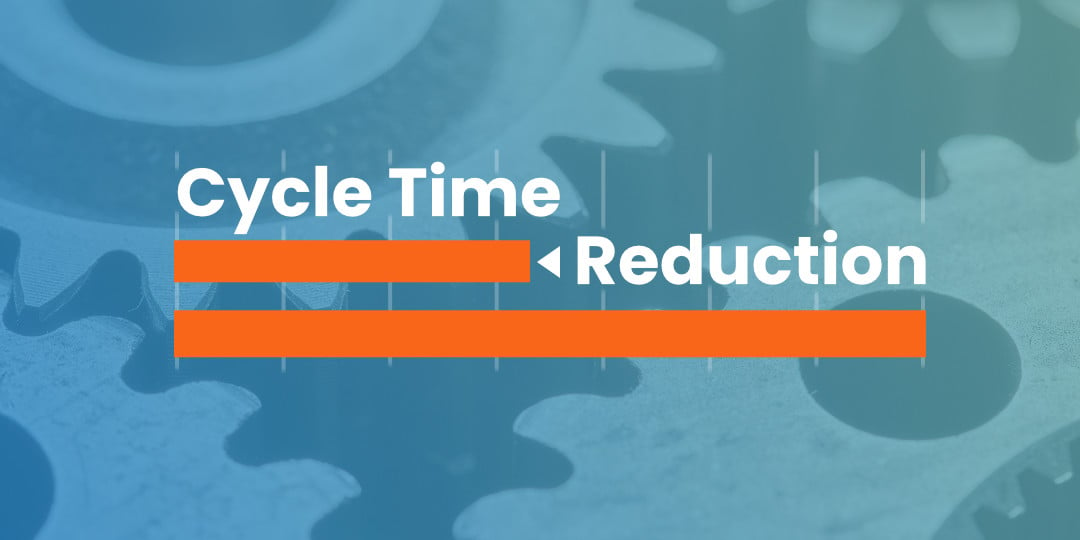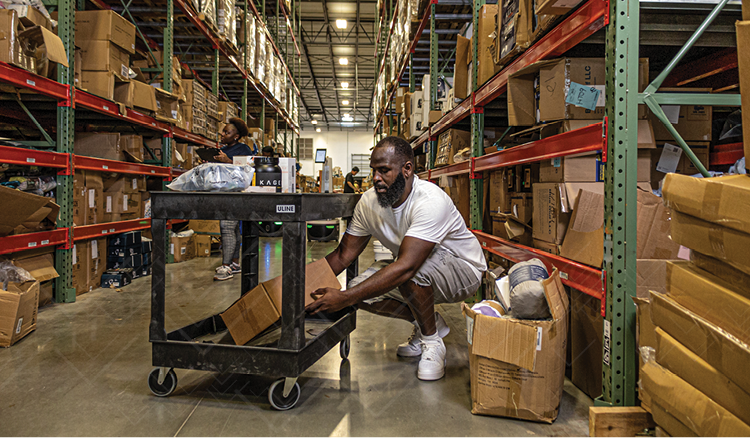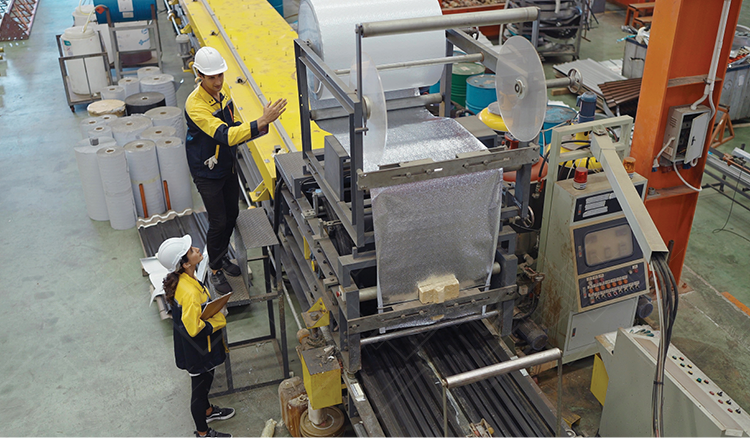How to Reduce Cycle Times to Improve Service Levels
You’ve probably reached what you thought was the limit of how far your cycle times could be reduced. And when that happens, you start to wonder if there’s something else to be done so that you can deliver to the customer faster and quit feeling like you’re treading water just to stay afloat.
At Veryable, we’ve created an on-demand labor marketplace that lets companies build flexible capacity to meet service levels and make improvements to lead times and cycle times. There are plenty of ways to accomplish reduced lead times, however, and companies using Veryable still have other work to do so that their operations can thrive.
In this article, you will learn the steps for reducing your cycle times so you can improve service levels and grow your business.
Six steps for reducing cycle times:
1. Properly measure on-time delivery
2. Understand cycle time vs lead time
3. Reduce cycle time
4. Optimize the order of your processes
5. Leverage your scheduling flexibility for profit
6. Continue to improve cycle time and lead time
1. Properly measure on-time delivery
On-time delivery as a metric is a key performance indicator for most manufacturing and logistics operations. It is so significant because it is essentially keeping a promise to the customer, who trusts a business to stick to the delivery date they give the customer.
It is tempting to measure this metric in such a way that makes it look better on paper than it is in reality. You have to be honest about how well you are meeting customer expectations.
Specifically, you should be measuring on-time delivery by the order, not by the unit. Imagine a customer receiving only 80% of the matching plates they ordered for a big party. Do you think they will buy from the company who shipped an incomplete order again? On paper, this looks like an 80% on-time delivery rate if you measure it by the unit, but to the customer this was not truly an on-time delivery. They feel like it was a 0% on-time delivery rate, because they didn’t end up with a full matching set and had to break out the paper plates.
You should also aim for the timeline the customer actually wants, not just what you expect is possible based on how you currently operate. Don’t limit yourself by accepting that you’ve already reached the best you can do. Maybe you’ve figured out how to deliver when you said you would, but can you deliver it faster, when the customer really wants it?
Obviously, “as soon as possible” is what people want most of the time, but there is a lot of room between the standard lead time and what is actually possible with continual improvements like the ones we suggest in this article.
2. Understand cycle time vs lead time
It is important to understand the difference between cycle time and lead time and know how they interact with each other. Cycle time is how long it will take you to produce the units you need. Lead time is how long it will take to process an order and get it to the customer.

If you can reduce your cycle time, then you will have more time within your usual lead time. That gives you room to rearrange your processes into an order that makes more sense for your operation. Shorter cycle times could open up opportunities for additional improvements that weren’t possible when you were running everything down to the wire. You could take on extra orders, charge extra to expedite certain orders, or shorten your lead time now that you can meet a quicker delivery promise.
3. Reduce Cycle Time
Getting cycle times down is the first active step toward improving your on-time delivery rate and delighting the customer with better service levels. Before getting into how to reduce your cycle times, it’s critical that you understand what you aim to accomplish.
The first thing you need to do is establish a goal for your cycle times. To do this, you should research to find what a competitive lead time looks like. Then, you should aim to have your cycle time be a fraction of that lead time. For now, you should aim for around one third to one half of lead times for your cycle time. This will give you flexibility and give you a good picture of what improvements are possible in your operation.
Over time, you can optimize the ratio between your cycle time and lead time based on your business goals.
You need to understand the volumes and the cycle reduction goals you are targeting, because this will determine when, where, and how you need to tackle this problem.
Now that you have a goal in mind for what your volumes and cycle time should look like, how do you actually get cycle times down?
Monitor and manage bottlenecks
The tricky thing about bottlenecks is that they are constantly changing. You need to understand where they are and how bad they are to quickly address them before they start pushing out your completion dates. Enterprise resource planning systems and other tools can help identify those bottlenecks to make them more visible and allow you to break them.
Eliminate activities that don’t add value
By eliminating the wasteful activities that do not add value, you increase the speed of your business processes. This is a core concept in Lean methodology, and is commonly practiced by leading manufacturing companies. In Lean methodology, there are eight distinct wastes: defects, overproduction, waiting, neglect of human talent/intellect, transportation, inventory, motion, and overprocessing. Reducing these wastes is your top priority if you want to create more value for the customer with what you have.
Reduce setup activities
While setup activities differ for each business, they can be defined as any activity surrounding the actual value-add actions. This can include getting materials, changing tools or equipment, setting fixtures, inspection activities, loading parts, or unloading parts. You should decide if any of these responsibilities could be handled externally or handed off to support roles. Either of these options can increase the productivity and throughput of your operations.
Fund improvements in value-add activities
No one knows your company’s processes better than the experts who live and breathe them every day. Those are the specific people you want to use to make improvements to your processes. Bringing in someone to temporarily take over their production responsibilities can free up those experts to fix and improve the value-add processes in your operation. This investment quickly pays for itself in productivity improvements and cycle time reduction.
Add shifts or workers to increase capacity
This is the quickest and easiest way to speed up operations. Adding incremental shifts (on second, third, or weekend shifts) will allow you to produce more in the same number of calendar days. This is a great option for recovery efforts, breaking bottlenecks, or handling incremental growth. When adding extra shifts, you will likely encounter problems with a fixed supply of labor. Individual workers can only do so much before productivity suffers, or they burnout and go somewhere else.
For this reason, you should look at ways to find additional workers to accomplish your extra work, whether that’s temp staffing or a solution tailored to the needs of manufacturing and logistics operations, like on-demand labor. By following all of the above steps, you will have streamlined processes and more people in place to keep work moving quickly. With less bottlenecks and more emphasis on value-add activities, work will become more efficient in your facility. This will reduce cycle times and give you the flexibility you need for growth.
4. Optimize the order of your processes
With a reduced cycle time, you have the flexibility you need to carry out processes in whatever order makes the most sense for your business.
For example, if you were using the same machine for multiple different product lines before, and you had to switch which product you were putting through the machine constantly, now you might be able to eliminate the constant swapping and save setup time. Now that you don’t have to rush multiple orders through production at once, you can just finish one product line before moving to the next. This becomes a virtuous cycle of improvements, as your cycle times decrease due to process improvements, again giving you more time to find opportunities to improve processes.
5. Leverage your scheduling flexibility for profit
When you reduce your cycle times drastically enough, you free up extra time before your customer expects the order. If the cycle time reduction leads to a reduction of your lead times, that allows you to take on more orders in the same amount of time. This unlocks additional opportunities for revenue by making you faster within your four walls. There are many ways you could use this extra time to your benefit: reducing lead times to be more competitive, taking on more orders in the same amount of time, or offering the option for customers to pay more for expedited orders.
We’ll dive into each of those options next.
Option 1: Reduce lead times
Now that you know you can deliver faster because you aren’t waiting as long for your production to finish, you could offer the customer a shorter lead time. This makes you more competitive in the market if delivery speed is a factor. It would also allow you to take on more orders throughout the year because you can keep products moving quickly through your facility.
Option 2: Take on more orders at once
If you prefer to have more flexibility, you could take on more orders at once and promise the same lead time as you did before the cycle time improvements. By not shortening the lead times you promise to the customer, this leaves you room to accept additional orders if you want to take them, or stop taking orders if you encounter any hiccups and need the time to sort them out.
Option 3: Offer options for expedited orders
One way to make additional revenue from your newfound extra time is to offer your customers the option to expedite orders for a fee. If you do not shorten the lead time you promise the customer, you can take on additional orders you normally wouldn’t have before the cycle time improvements.
To gain additional revenue from these new orders, you could charge a percentage fee to have their order expedited and prioritized over other orders you are processing at the same time, without sacrificing lead times to any of your customers.
6. Continue to improve cycle time and lead time
The process of improving cycle times and leveraging the extra time by reducing lead times or taking on extra orders can be repeated. Along the way, you will see “cost out” improvements due to increased efficiency in your processes and a lower cost per unit as you spread your overhead costs across more output.
Finding workers to increase capacity
As mentioned above, additional workers can remove constraints and help you reduce cycle times tremendously. The question is: would you rather go hunt for employees that you’d keep even after the work is gone, or would you rather have the extra workers only when you need them for growth initiatives like cycle time reduction?
For more information on reducing cycle times with on-demand labor, check out our most recent article: The First Step to Faster Fulfillment: Mastering Dock-to-Stock Cycle Times
To learn more, visit our Lean Center of Excellence Homepage or our homepage for Continuous Improvement, Operational Excellence, and Lean Professionals.
Previous Posts
How Policy Constraints, Not Just Production Bottlenecks, Threaten Your Bottom Line
The Future of Manufacturing and Logistics
Create a free business profile today to explore our platform.






